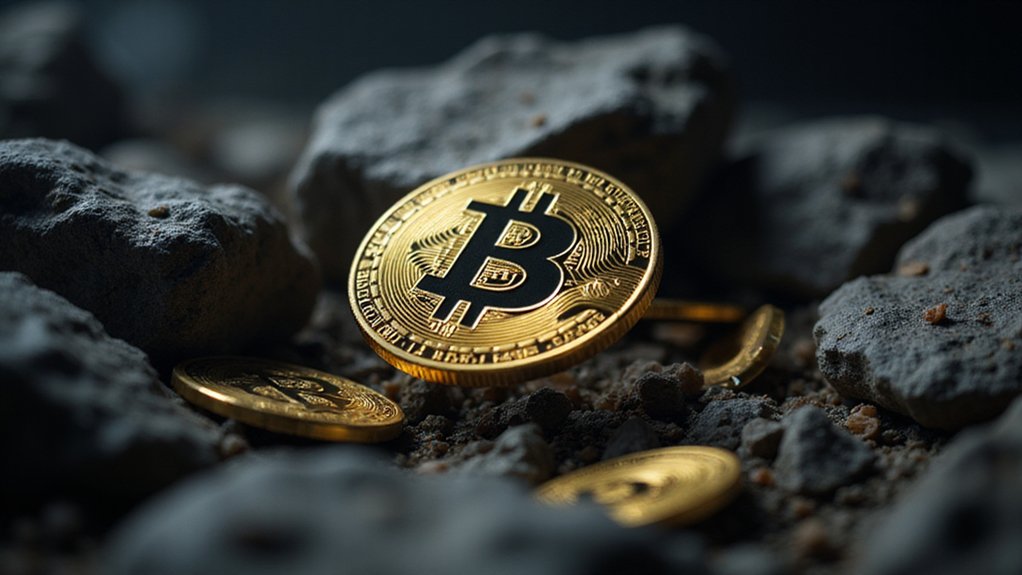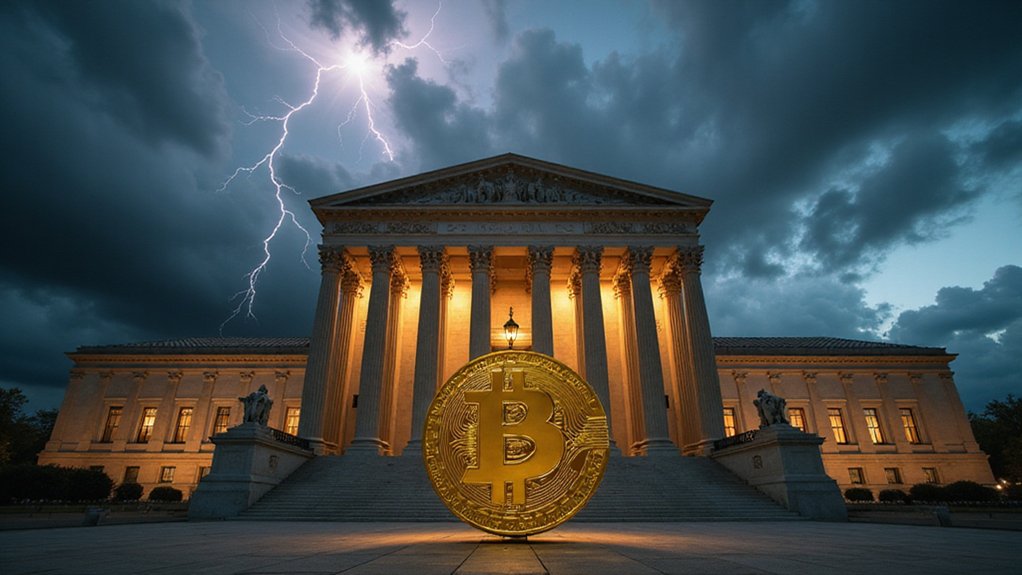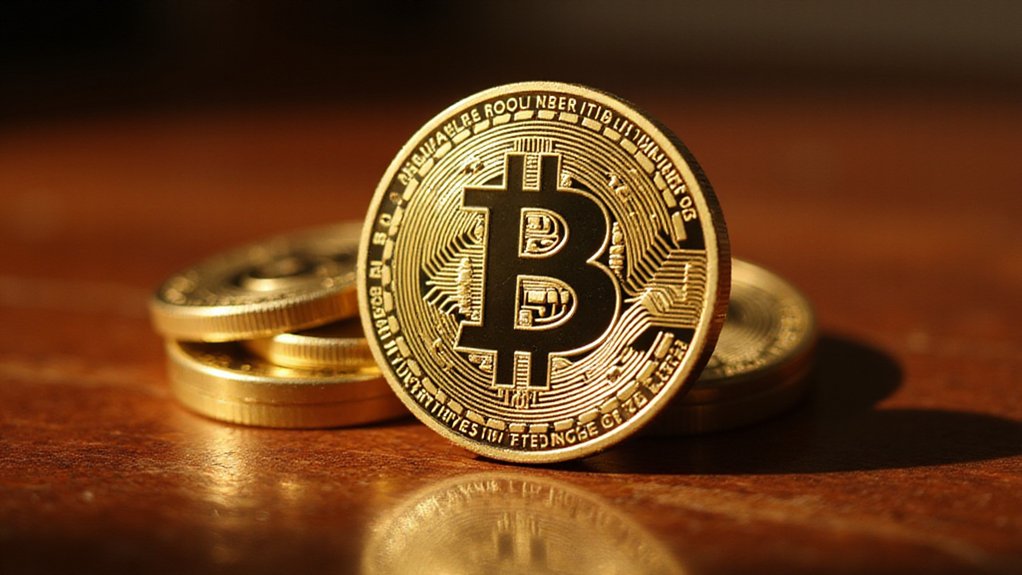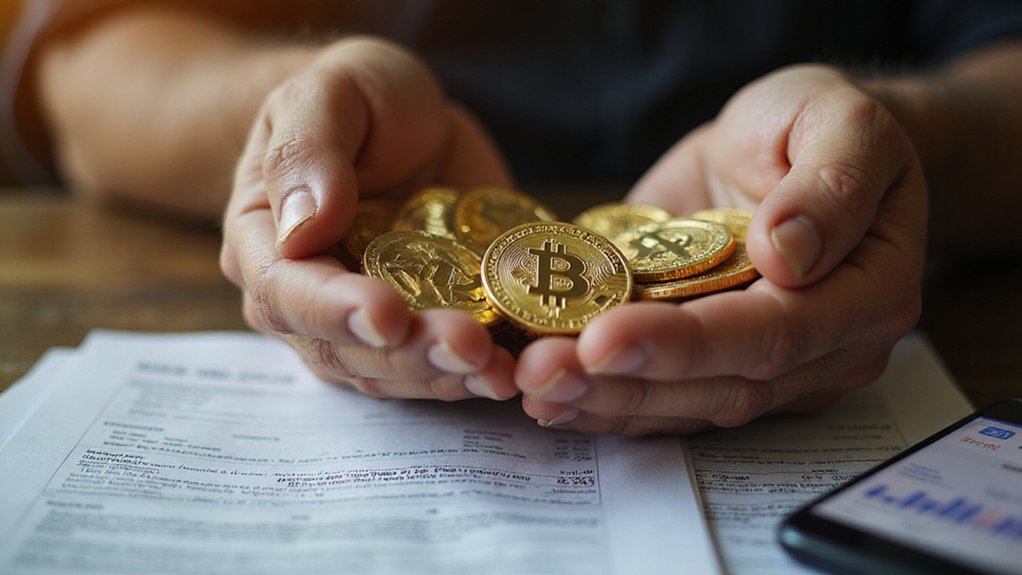While Bitcoin’s recent surge to record highs above $115,000 in June 2025 has rekindled familiar whispers of retail euphoria and institutional validation, the cryptocurrency’s current trajectory bears the hallmarks of a market phenomenon destined for deflation rather than sustained ascension.
The technical architecture underlying Bitcoin’s current position reveals a precarious equilibrium. Despite the bullish pin bar pattern adorning June’s monthly close—that theatrical rejection of lower prices so beloved by chart enthusiasts—the cryptocurrency remains trapped within a volatility channel spanning $102,000 to just below $120,000. This range, while impressively elevated, represents a ceiling that has proven stubbornly resistant to meaningful penetration.
Analysts project potential upside to $130,000, yet these same forecasts carry ominous warnings about support levels that read like a descending staircase of capitulation. The psychological $100,000 mark looms as a critical threshold, below which the next stops at $95,000 and $92,000 begin to resemble a controlled demolition rather than a mere correction.
The psychological $100,000 threshold conceals a treacherous descent—each support level marking another step toward controlled demolition rather than mere correction.
The retail investor renaissance that historically accompanies Bitcoin’s recoveries appears increasingly manufactured. While past episodes—notably the post-March 2020 revival—demonstrated genuine momentum, current enthusiasm feels more akin to muscle memory than authentic conviction. Media coverage amplifies buying pressure, yet such frenzies carry the longevity of morning mist, prone to rapid evaporation when sentiment shifts.
Institutional adoption, often heralded as Bitcoin’s salvation from volatility, presents a double-edged proposition. ETF approvals and conference validation provide structural support, yet professional trading strategies tend toward market-neutral approaches that can dampen both excessive exuberance and precipitous declines. The very institutionalization that legitimizes Bitcoin may paradoxically constrain the explosive movements that originally captured retail imagination.
Bitcoin’s scarcity thesis—that finite supply inevitably drives unlimited demand—remains mathematically sound yet practically vulnerable to macroeconomic headwinds and regulatory uncertainty. The 21-million-coin cap provides theoretical price floors, but markets operate on sentiment as much as fundamentals. Current market sentiment reveals a bearish majority at 51% compared to 49% bullish sentiment, suggesting underlying skepticism despite recent price gains.
As forecasts stretch toward $200,000 and beyond, the disconnect between aspiration and current price action becomes increasingly pronounced. The crypto landscape is moving from speculation to tangible utility, yet Bitcoin’s current positioning suggests a market more focused on speculative trading than building sustainable value propositions. The frenzy, such as it exists, appears poised for the familiar trajectory of cryptocurrency enthusiasm: spectacular buildup followed by equally spectacular deflation.









